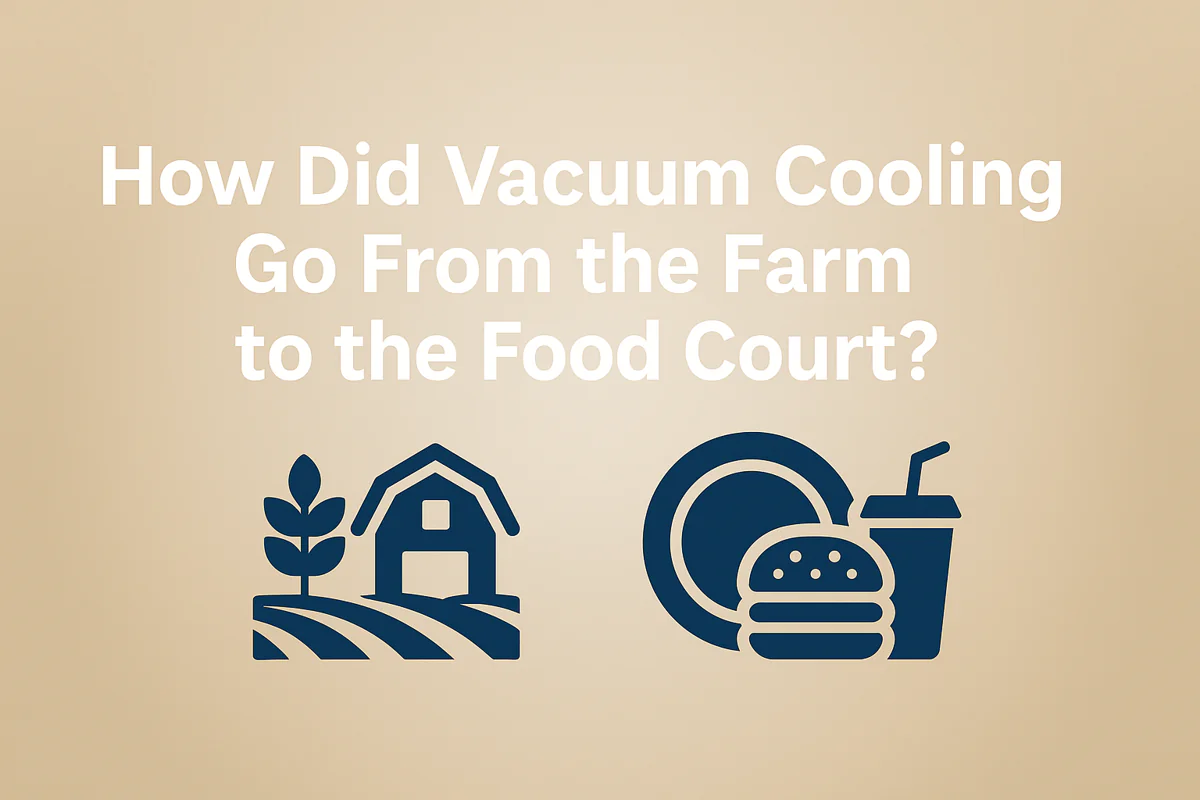
How Did Vacuum Cooling Go From the Farm to the Food Court?
You see a vacuum cooler in a modern bakery and think it’s a kitchen appliance. This powerful technology actually started in vast agricultural fields. How did this industrial workhorse adapt to become so versatile?
Vacuum cooling evolved by becoming smaller, smarter, more hygienic, and highly specialized. It transitioned from cooling bulk produce on farms to precisely chilling high-temperature cooked foods in commercial kitchens, meeting new demands for speed and safety.
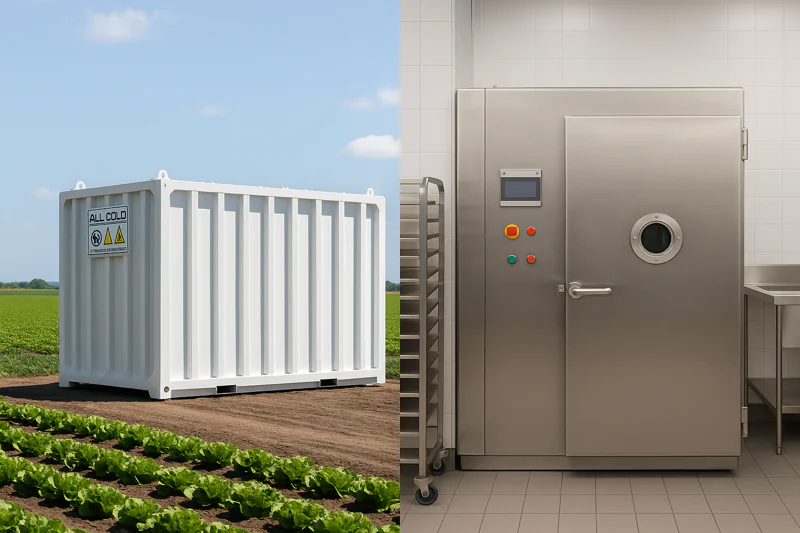
This journey wasn’t accidental. It was driven by the changing needs of the food industry. The same core physics applies, but the machine itself has been completely reimagined. For business owners like Carlos on his farm, or managers like Sophia in her central kitchen, this evolution is what makes the technology so valuable today. Let’s trace the key steps of this transformation.
How did vacuum cooling first conquer large-scale agriculture?
Imagine harvesting tons of lettuce under a hot sun. That heat, called "field heat," keeps the vegetable aging rapidly, causing it to wilt and spoil. Traditional cold rooms are too slow to stop this process effectively, leading to huge losses.
Vacuum cooling first succeeded in agriculture by providing the only method to rapidly and uniformly remove field heat from huge quantities of produce at once, dramatically extending its life right from the source.
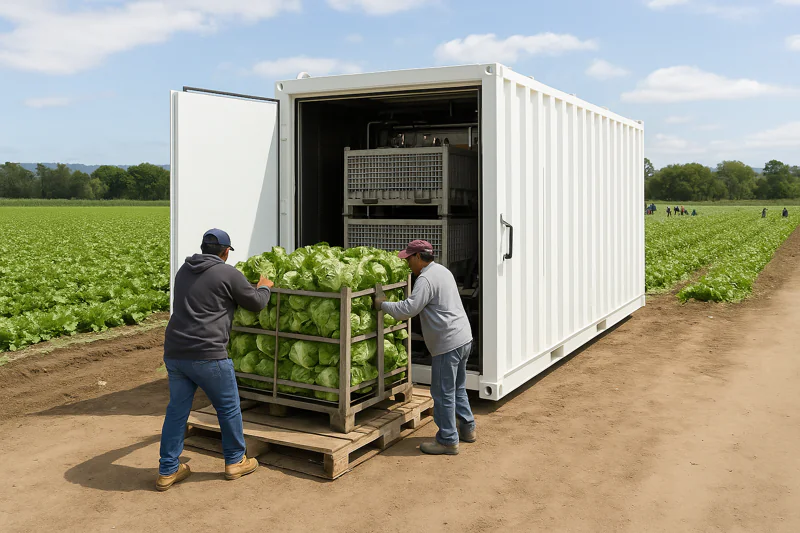
This was the technology’s first major application, and it was a game-changer for large farm owners like Carlos. The initial machines were purely industrial. They were enormous, rugged, and built for one simple task: to cool pallets of produce like lettuce, celery, or broccoli as fast as possible. The focus was on volume and raw power, not necessarily on delicate precision or advanced digital interfaces. I remember visiting a massive farming operation in California early in my career. They treated their vacuum coolers like tractors—essential, powerful, and expected to work hard all day. The main goal was to pull the product temperature down from 25°C to 2°C in under 30 minutes. This immediate cooling essentially puts the vegetables to sleep, locking in freshness, crispness, and weight. For the farmer, this meant less spoilage, a longer sales window, and the ability to ship their product to more distant markets. This breakthrough established vacuum cooling1 as the gold standard for post-harvest pre-cooling in the industrial agriculture2 sector.
From Field Heat to Financial Gain
The core challenge for large-scale farming is preserving the value of the harvest. A delay of just a few hours can lead to significant degradation. Early vacuum cooling directly addressed this by offering benefits that traditional methods simply could not match.
| Feature | Traditional Cold Room | Early Industrial Vacuum Cooler3 |
|---|---|---|
| Cooling Speed4 | 10-12 hours | 20-30 minutes |
| Product Uniformity | Uneven (outside cools first) | Perfectly uniform (inside & out) |
| Shelf Life | Standard | Extended by 2-3 times |
| Labor Requirement | High (stacking crates) | Low (load full pallets) |
| Impact on Spoilage | Significant post-harvest loss | Drastically reduced loss |
When did it move from the farm to the packing house?
Once produce was pre-cooled on the farm, the next stop was the packing house or wholesale distribution center. These facilities have different needs. They aren’t just cooling one crop; they are handling various products and preparing them for demanding buyers like supermarket chains. Quality and consistency become critical.
The technology evolved for packing houses by becoming more reliable and precise. The focus shifted from just raw speed to repeatable, consistent cooling cycles that could guarantee quality for wholesale buyers.
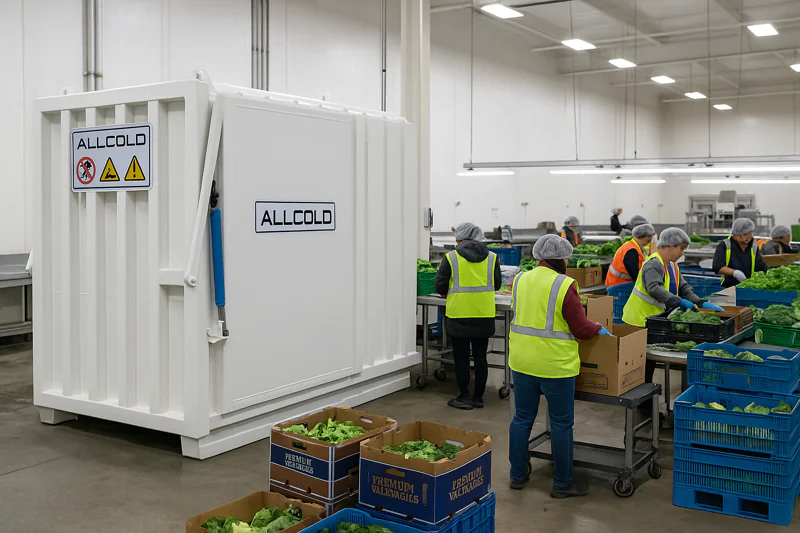
This was the bridge between purely industrial and more commercial use. A professional buyer like Norman isn’t in the field; he’s evaluating the final product. He needs to know that every pallet of broccoli he buys meets the same quality standard. This forced an evolution in the machines. While still large, the vacuum coolers for packing houses needed better control systems. The simple on/off switches and analog dials of the earliest field units were no longer sufficient. We began to see improved timers, more accurate pressure sensors, and more robust refrigeration systems designed for continuous, all-day operation within a busy facility. The goal was to create a predictable outcome every single time. As a manufacturer, our conversations with clients started to change. Instead of just asking "How many tons per day?", we began asking "What are your quality parameters? What are your customers’ expectations?". This shift required us to build machines that were not only powerful but also incredibly consistent.
The Demand for Uniform Quality5
In a packing house, the machine becomes part of an integrated production line. It has to be dependable hour after hour, delivering the exact same cooling result for every batch. This required a new level of engineering refinement.
| Application | Farm-Level Cooling | Packing House Cooling |
|---|---|---|
| Primary Goal | Stop field heat immediately | Ensure consistent quality for sale |
| Key Feature | Maximum cooling capacity | Repeatability and reliability6 |
| Operator Skill | Basic operation | Ability to follow set procedures |
| Product Focus | Single, bulk crop | Multiple product types |
What made vacuum cooling practical for commercial kitchens and bakeries?
Cooling hot, cooked food presents a completely different set of challenges. A commercial kitchen or bakery, like the one managed by Sophia, worries about food safety (HACCP), speed to meet delivery schedules, and space. A huge, rugged machine designed for lettuce simply won’t work.
Vacuum cooling became practical for commercial use when it was redesigned to be compact, hygienic (using stainless steel), and capable of handling high temperatures and moisture from cooked foods like bread or rice.
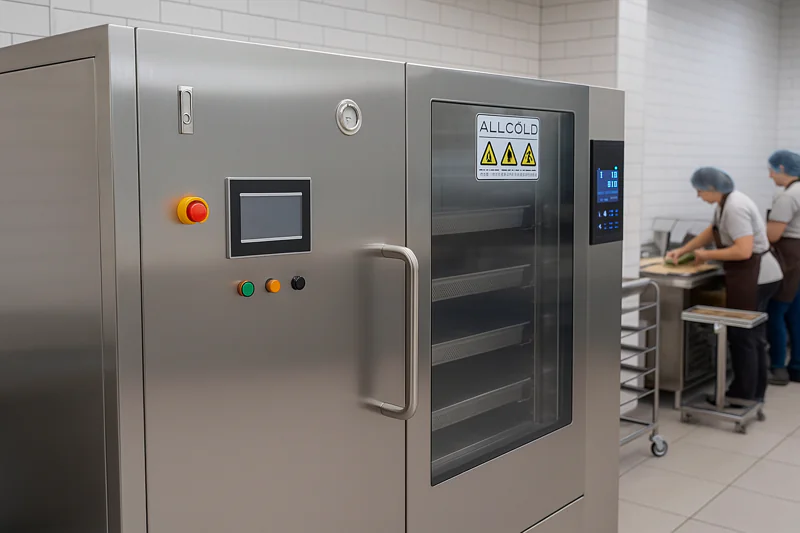
This was the biggest evolutionary jump. It required us to fundamentally rethink the machine’s design. Sophia needs to cool a trolley of freshly baked bread from 92°C to 30°C in under 5 minutes to get it ready for packaging. This is an extreme temperature drop. The first challenge was hygiene. Food-safe stainless steel (SUS304) became the standard material for the chamber and all contact surfaces. We designed the interiors to be smooth and easy to clean, eliminating corners where bacteria could hide, making them suitable for HACCP-certified facilities. The second challenge was performance at high temperatures. Cooling hot, steamy food releases a massive amount of water vapor. This required a much more powerful refrigeration system—the "water-catcher"—to instantly freeze this vapor into ice. Without an oversized, high-efficiency system, the vacuum pump would be damaged. Finally, space is a premium in any kitchen. The machines had to become more compact and integrated, with the vacuum pump and refrigeration unit often built into a single, clean frame. This transformation from a large, outdoor machine to a compact, hygienic indoor appliance opened up a whole new world of commercial applications.
Meeting HACCP and High-Speed Production
For cooked food, cooling is not just about shelf life; it’s a critical control point for food safety. The "danger zone" for bacterial growth is between 5°C and 60°C. A vacuum cooler7 that can pass through this zone in minutes is a huge asset.
| Design Aspect | Produce Cooler | Cooked Food Cooler |
|---|---|---|
| Primary Challenge | Field heat | Bacterial growth & high temp |
| Chamber Material | Carbon steel (often) | Stainless Steel (SUS304) |
| Critical Feature | Large volume capacity | Powerful water-catcher system |
| Target Temperature | Cool to ~2°C | Cool through "danger zone8" fast |
How is vacuum cooling now shaping the supermarket shelf?
The final frontier for any food product is the supermarket. Here, visual appeal and shelf life are everything. Wilted salads or ready-meals with a short use-by date lead to waste and lost profits. The commercial application of vacuum cooling directly impacts what we see on store shelves.
Vacuum cooling empowers the modern supermarket supply chain by creating products that last longer and look better. It is the key technology enabling the freshness and availability of pre-packaged salads and ready-to-eat meals.
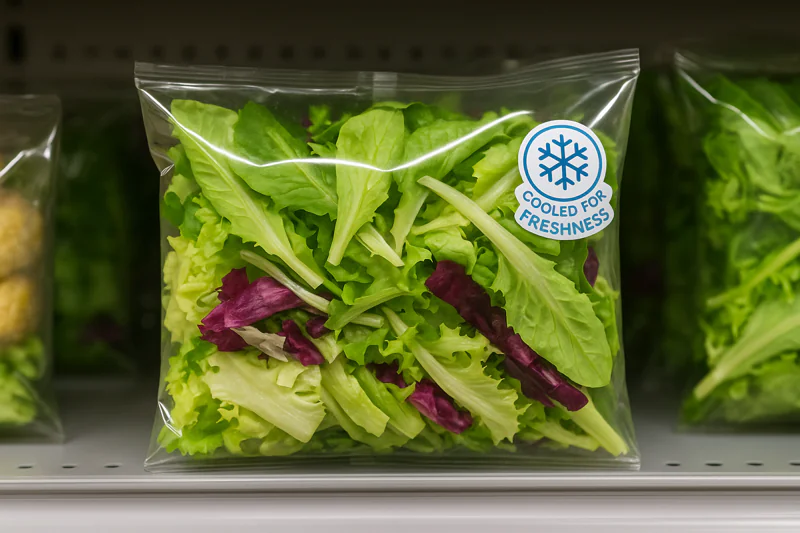
The evolution has come full circle. The initial cooling on the farm, the precise processing in the packing house, and the rapid chilling in the central kitchen all contribute to a better final product for the consumer. When a central kitchen uses a vacuum cooler for its ready-to-eat meals, it’s not just cooling the food. It’s engineering a longer shelf life. By bringing the core temperature down so rapidly, the window for microbial growth is slammed shut. This allows a supplier to confidently give their products a longer expiration date, which is a massive advantage when dealing with large supermarket chains. This technology is the invisible engine behind much of the fresh, convenient food we buy. It allows for centralized production, reduced waste, and a more consistent, higher-quality product on the shelf. For the supermarket, this means less food being thrown away and happier customers. For the producer, it means a more stable, profitable business. This final step shows how a deeply industrial technology has fully adapted to serve the fast-paced, quality-driven commercial market.
Conclusion
From vast fields to compact kitchens, vacuum cooling evolved by becoming smarter, cleaner, and more specialized. It is now an essential tool for almost any modern food business.
-
Explore this link to understand how vacuum cooling revolutionizes post-harvest processes, ensuring freshness and reducing spoilage. ↩
-
Discover insights into industrial agriculture trends that can enhance efficiency and sustainability in farming practices. ↩
-
Discover how this innovative cooling technology can enhance your harvest’s value and reduce spoilage. ↩
-
Learn about the critical role of cooling speed in preserving the quality and shelf life of your produce. ↩
-
Understanding Uniform Quality can enhance your production efficiency and product consistency. ↩
-
Exploring this topic can help you improve your operational efficiency and product quality. ↩
-
Exploring how vacuum coolers function can enhance your knowledge of effective food cooling methods. ↩
-
Understanding the danger zone is crucial for ensuring food safety and preventing bacterial growth. ↩
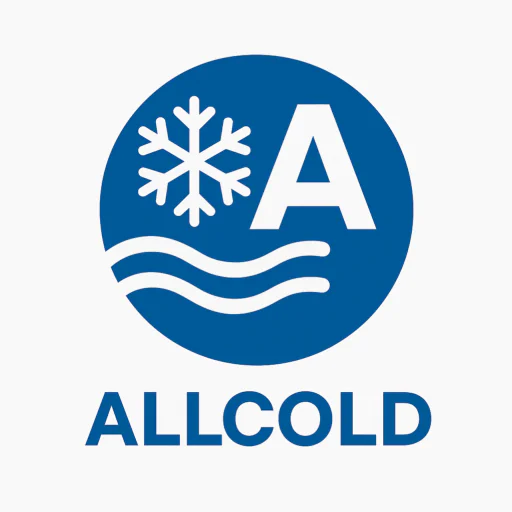
Mila
You May Also Like
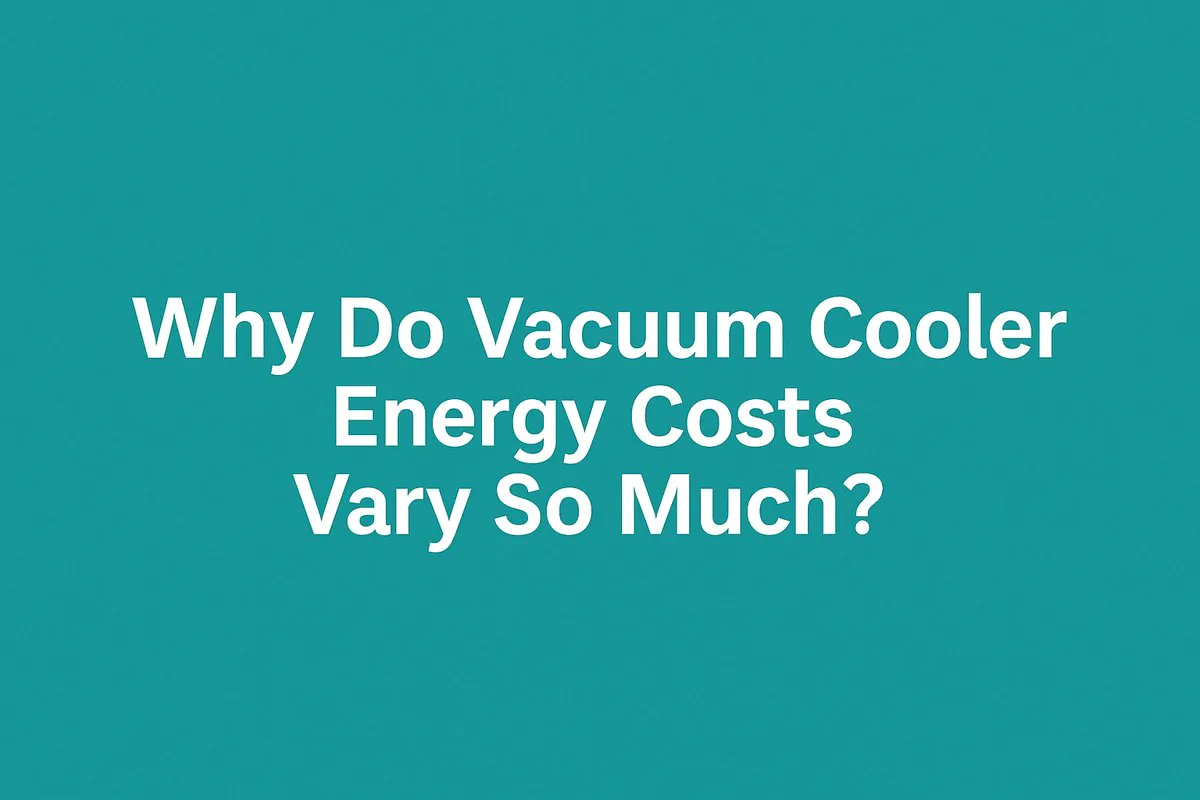
Why Do Vacuum Cooler Energy Costs Vary So Much?
You’re calculating the return on investment for a new vacuum cooler, but there’s a huge unknown: the electricity bill. You
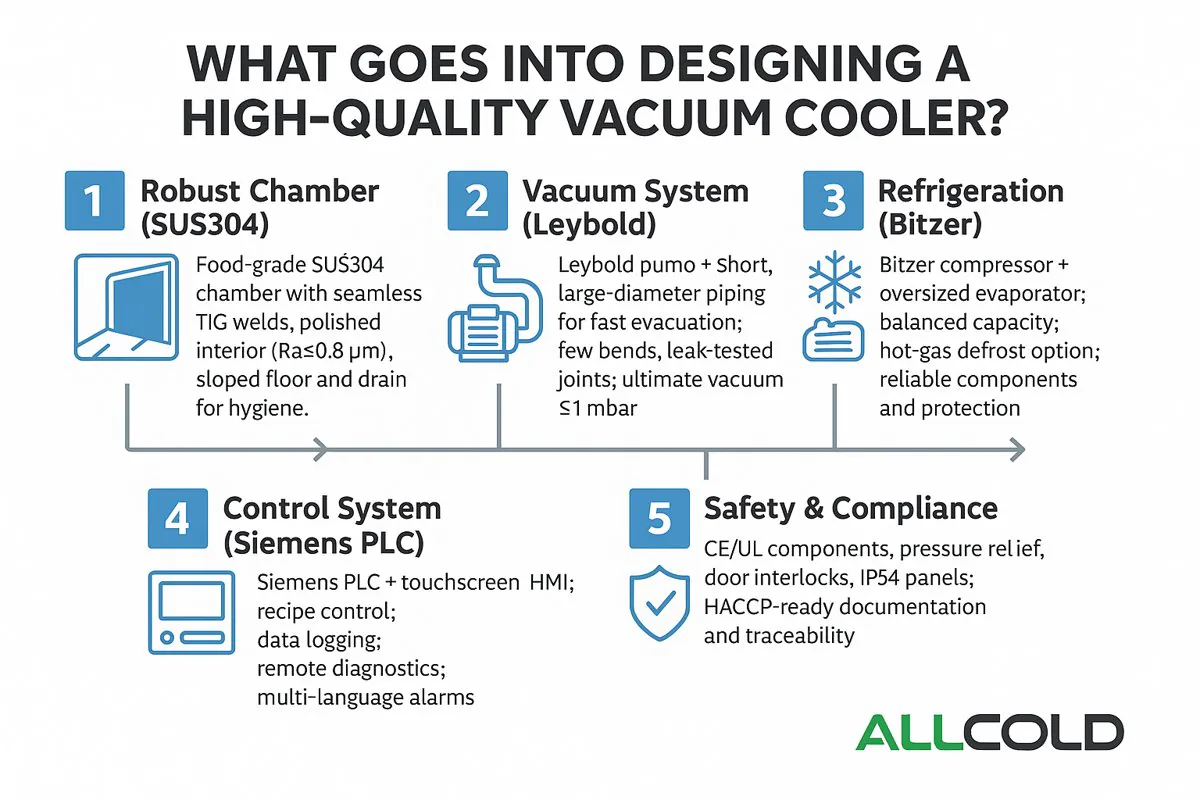
What Goes Into Designing a High-Quality Vacuum Cooler?
At first glance, a vacuum cooler seems simple: it is a steel box that makes vegetables cold. But this simplicity
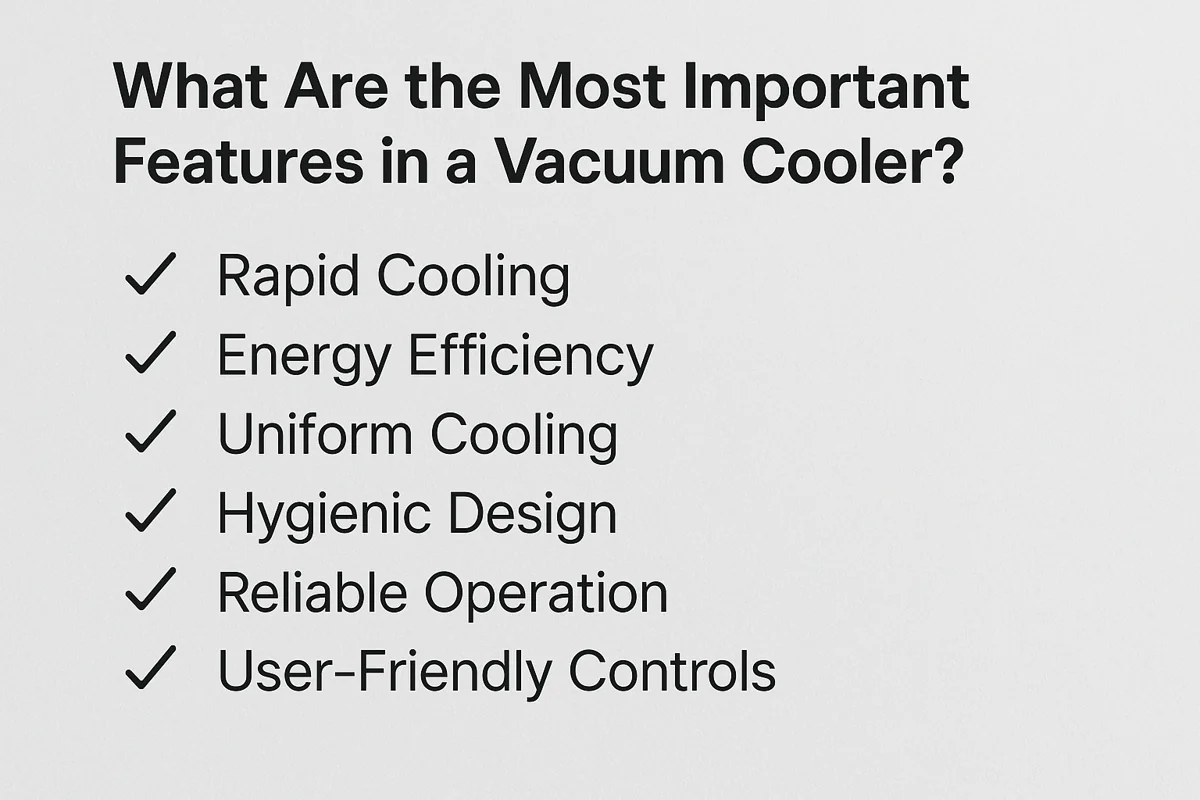
What Are the Most Important Features in a Vacuum Cooler?
You’re comparing quotes from different suppliers, and the specification sheets all start to look the same. They all list a
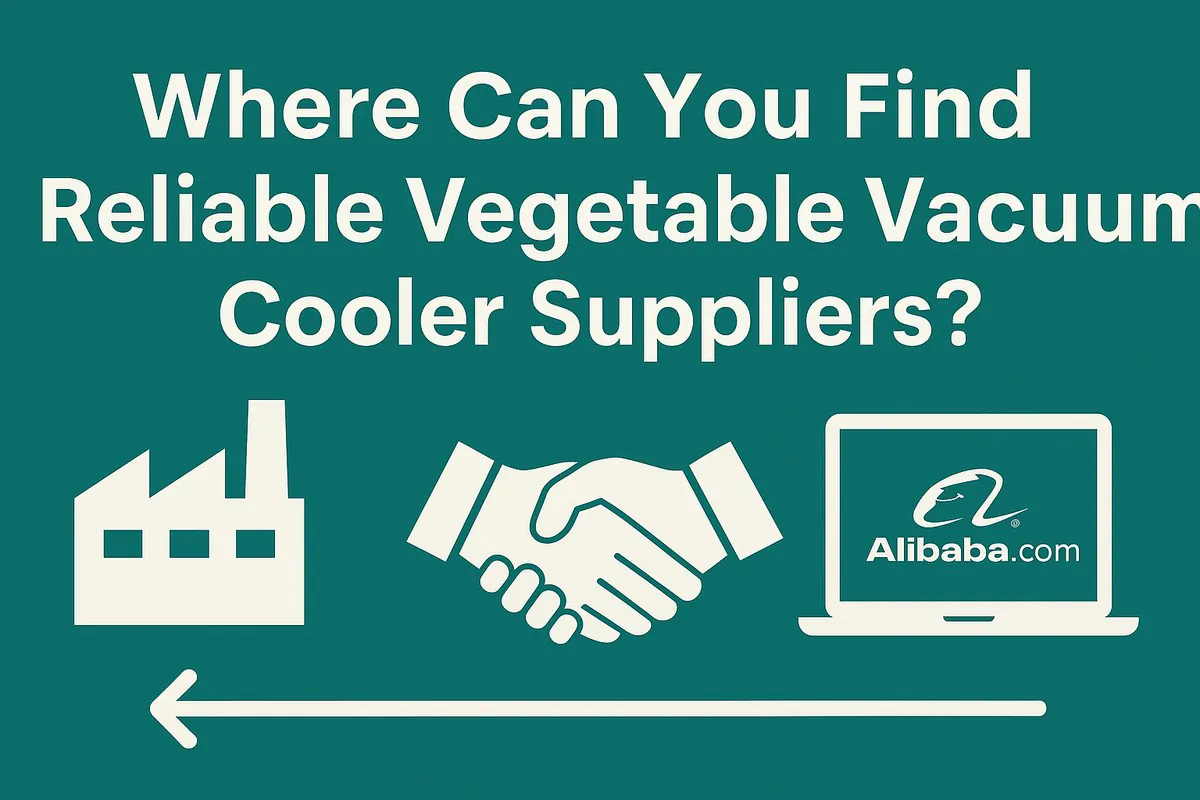
Where Can You Find Reliable Vegetable Vacuum Cooler Suppliers?
You’ve made the decision to invest in a vacuum cooler, but now you face an even bigger challenge: finding a
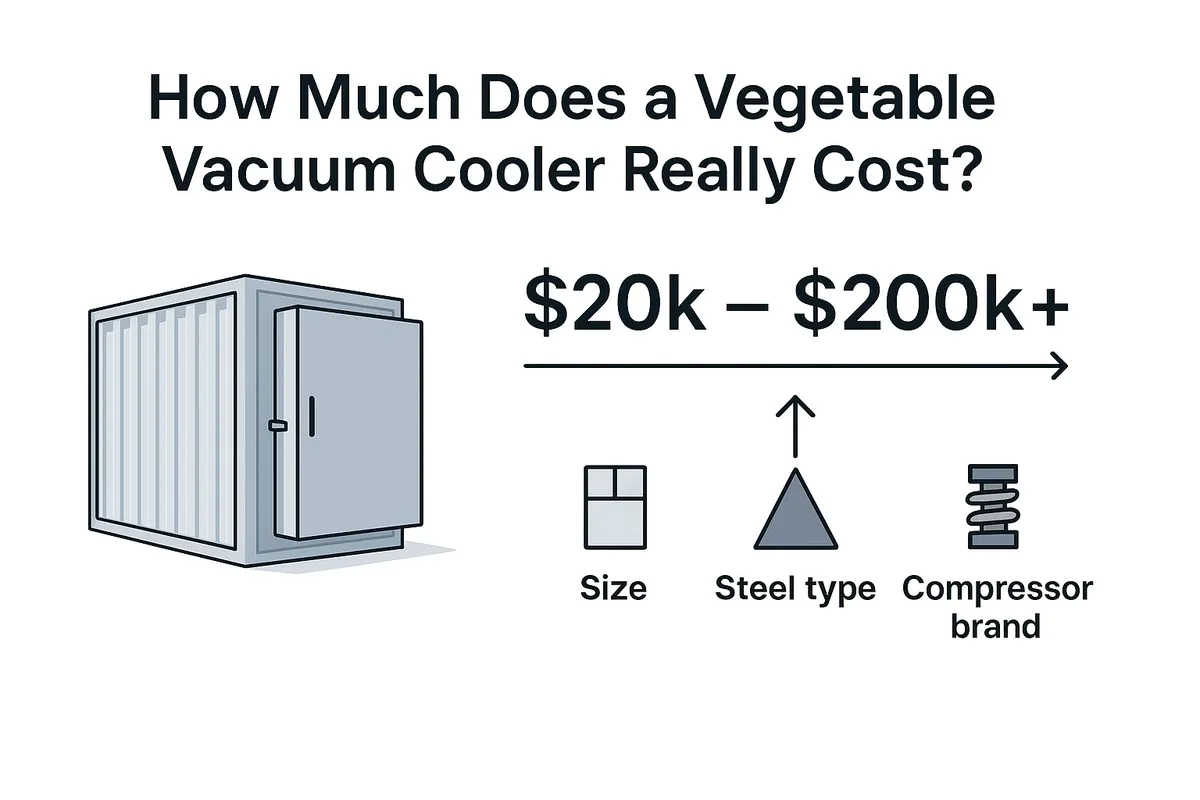
How Much Does a Vegetable Vacuum Cooler Really Cost?
You know you need a vacuum cooler to improve your product quality, but the price is a huge question mark.
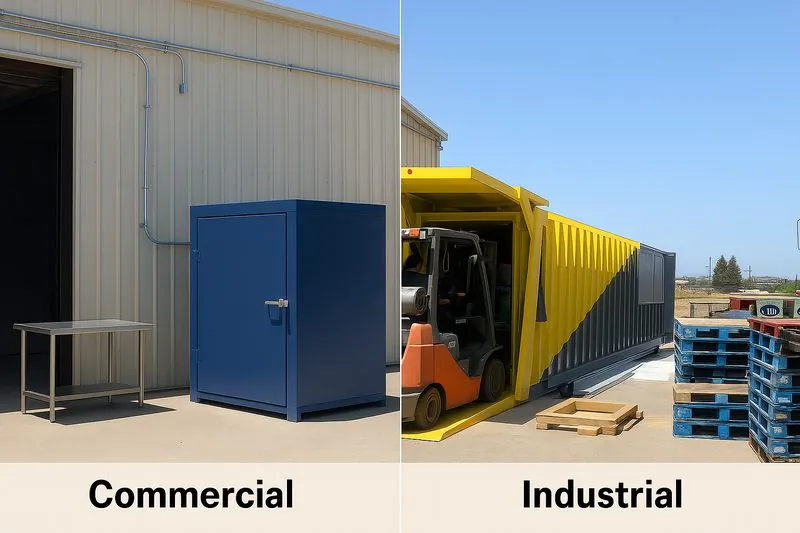
Industrial vs. Commercial Vacuum Coolers: Which Should You Choose?
Your business is growing, and you know that rapid post-harvest cooling is the key to quality and profit. But as
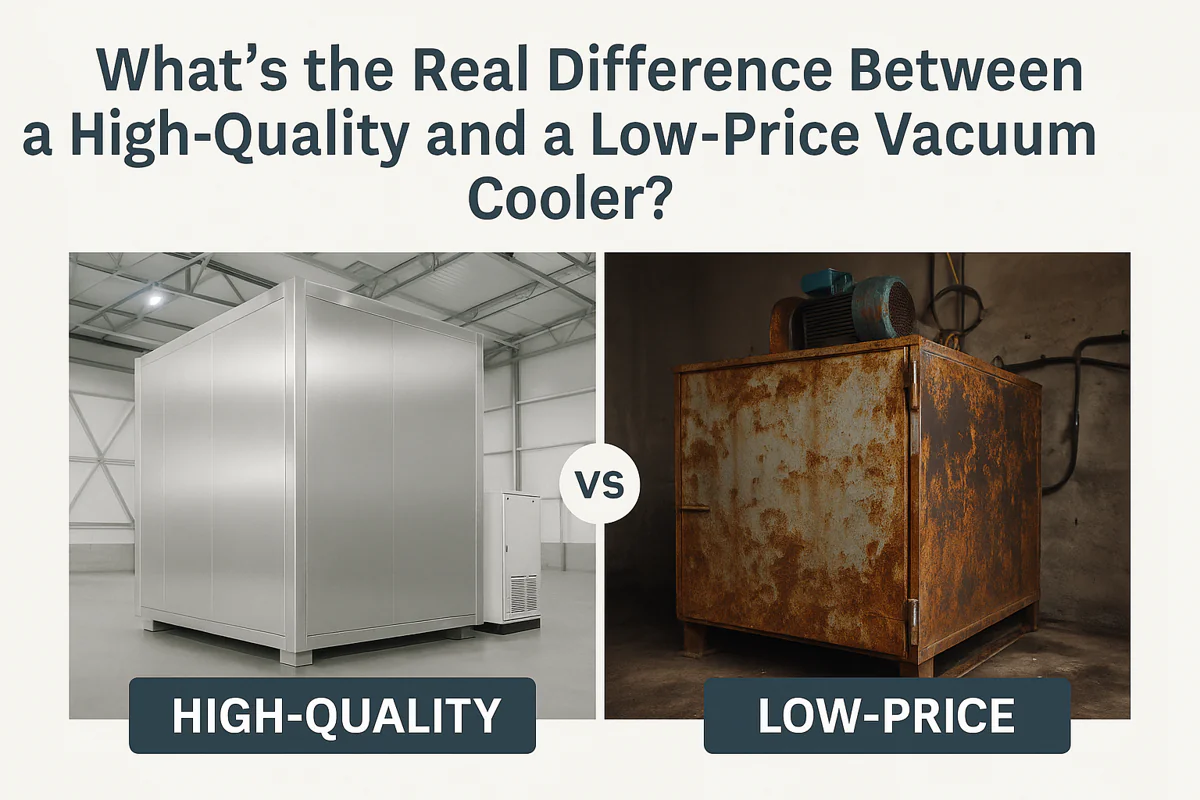
What's the Real Difference Between a High-Quality and a Low-Price Vacuum Cooler?
You are looking for a vacuum cooler, and you see a huge range of prices. One supplier quotes a price
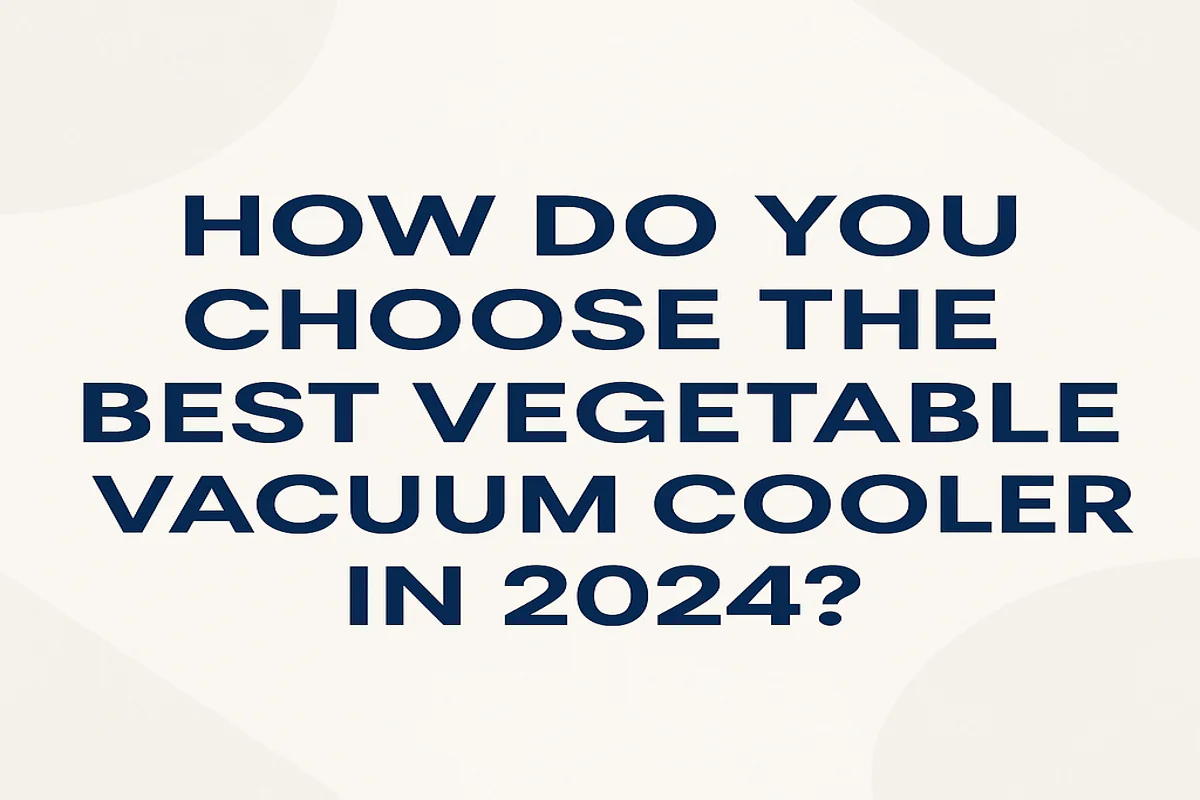
How Do You Choose the Best Vegetable Vacuum Cooler in 2024?
Choosing a vacuum cooler is one of the biggest investments you’ll make in your farm or food business. The market
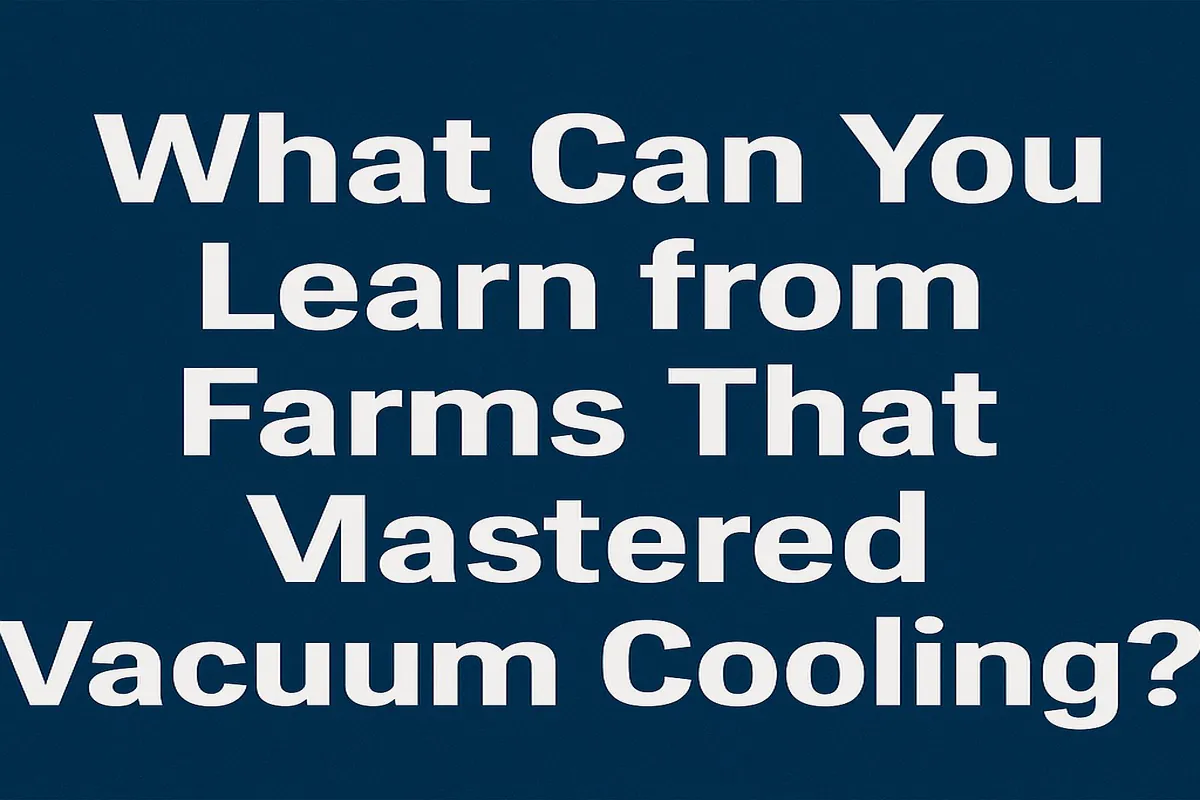
What Can You Learn from Farms That Mastered Vacuum Cooling?
You see the challenges in your own operation every day: the race against field heat, the constant worry about shelf
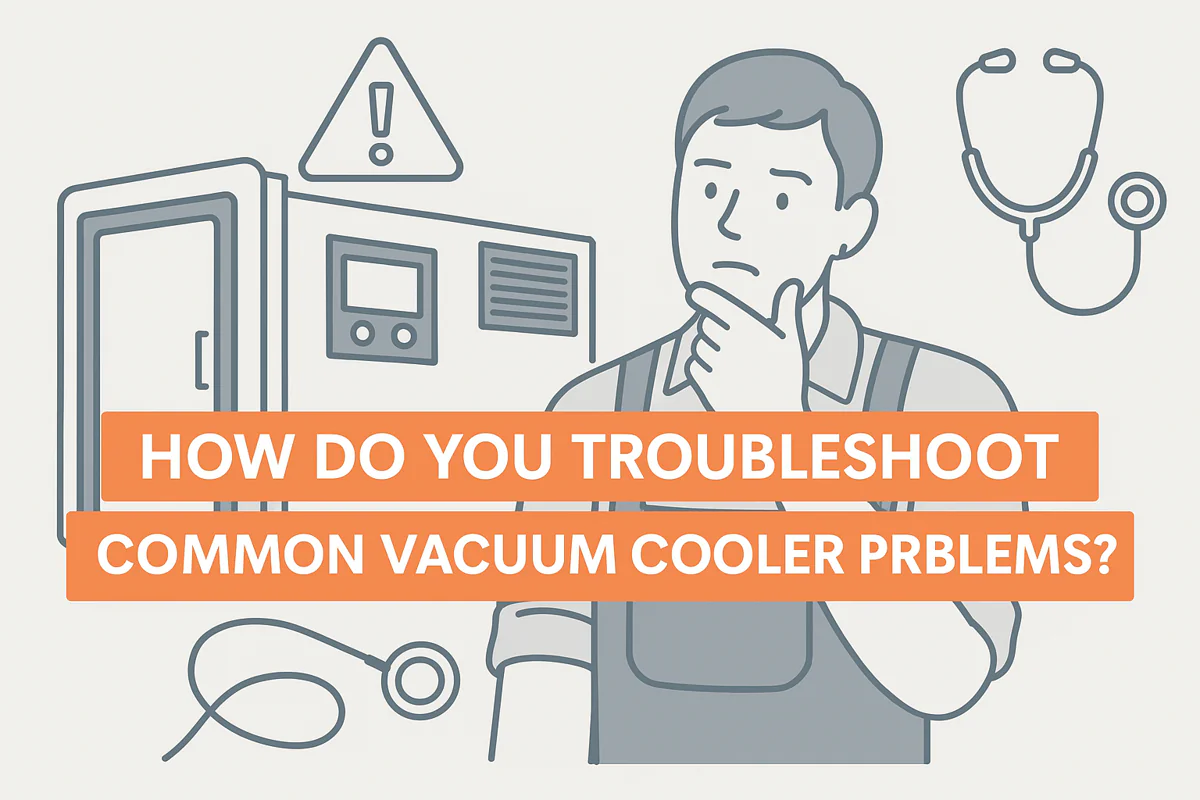
How Do You Troubleshoot Common Vacuum Cooler Problems?
Your harvest is ready, the pallets are stacking up, but your vacuum cooler suddenly stops. A red light is flashing,
